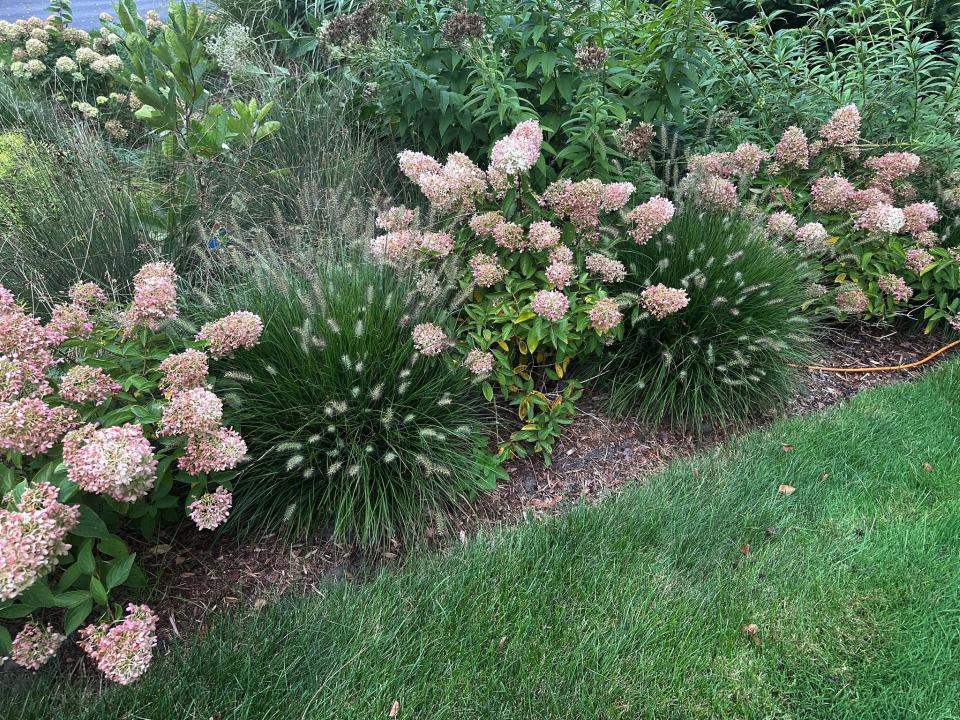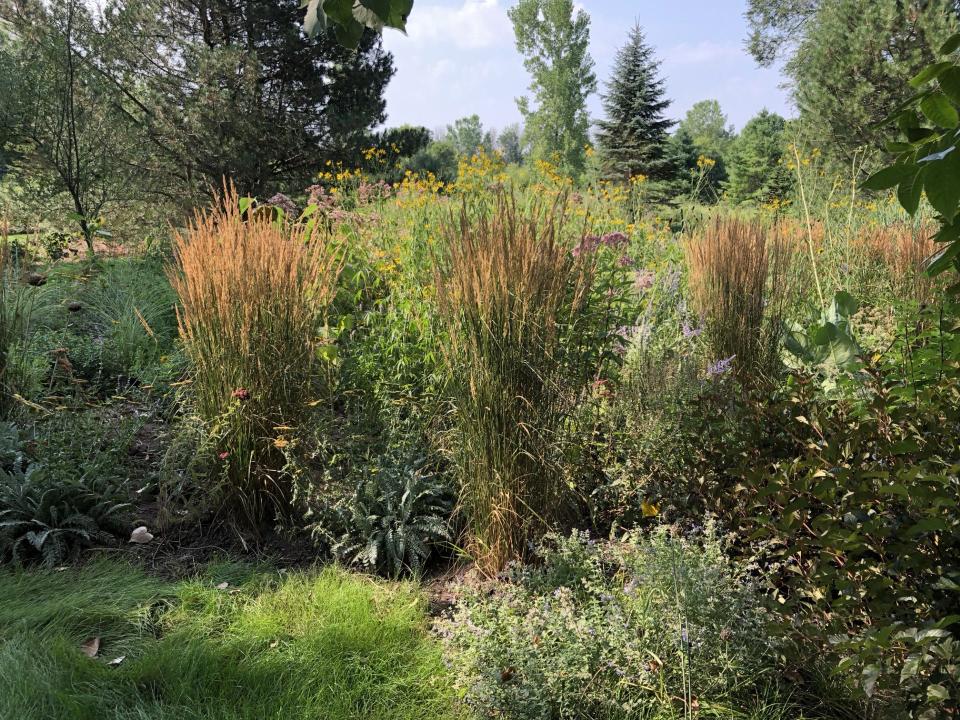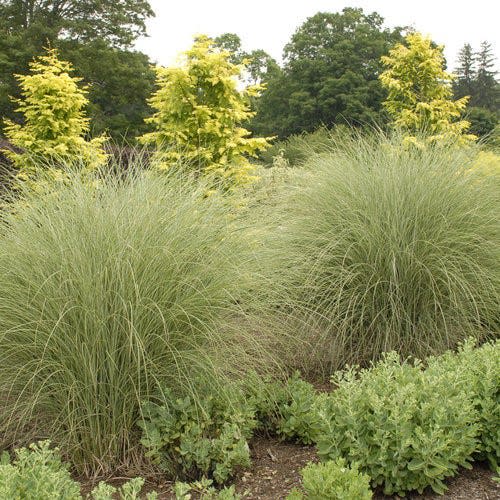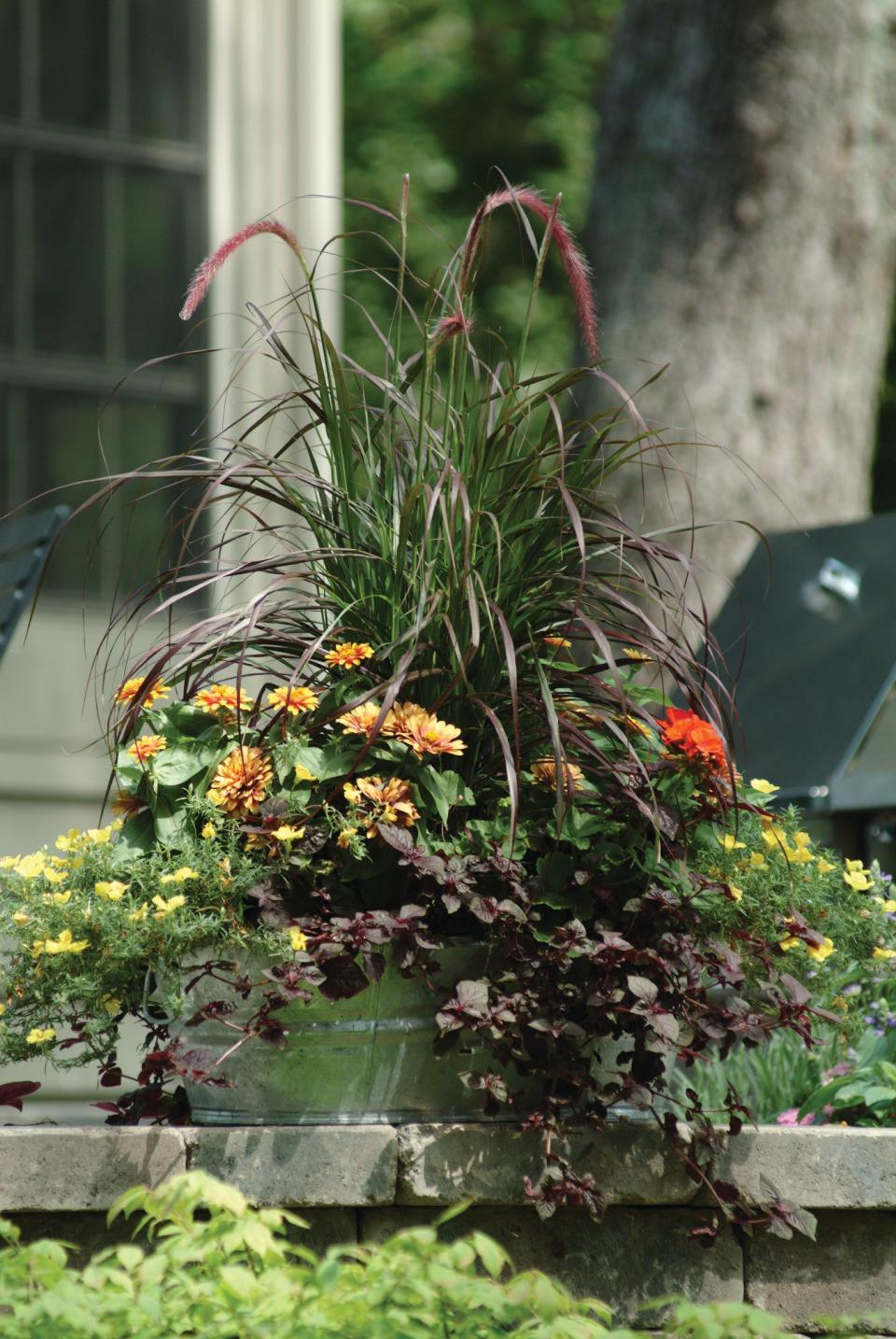Ornamental grasses can add texture and color to Wisconsin gardens year-round
Ornamental grasses are tough, drought-tolerant plants that can add structure, texture and color to any garden. They come straight and tall, wide and wispy, even short and spiky.
Some also add two things most other plants can’t: movement and sound.
“In late summer or early fall, some of the pampas grasses have gorgeous movement in the wind as they have feather-like plumes. The Karl Foerster grass moves, too, but its leaves are more course, so when they rub together they produce a calming sound,” said Debra P. Kopydlowski, the horticulturist at Westmoor Country Club in Brookfield and manager of the annual and perennial department at Stein's Gardens & Home in Oconomowoc.
But the best thing about them is there are so many grasses to choose from. There are perennials and annual grasses as well as natives and non-natives. And they can be used in so many ways.
“You can mix them with a wide variety of plants. You can even mix them with bushes and some small-scale trees. ... Those different textures in the grasses add some height and dimension to a bed. And once established, they’re pretty easygoing,” said Kopydlowski, a Master Gardener volunteer who grows about 15 varieties of grasses on her half-acre lot in Eagle.
In a circular bed, she said, you could put taller or larger grasses in the center and shorter ones around them. In a bed against a house or fence, taller plants can go in the back with shorter ones in the front.
They also look great staggered; especially when more than one type of grass is used.
“With all the different colors and textures it can look interesting to use more than one grass. We have an area on the golf course that is pretty much nothing but grasses that are planted in such a way that you can see every grass in the bed because they are staggered. We used zebra grass, Karl Foerster, pampas grass and bunny tails.
“Sometimes I might plant three taller grasses in the back of a bed and two shorter ones in the front. ... They aren’t directly in front of each other,” so they all can be seen, she added.
But when using more than one grass, she said it’s best not to mix too many colors and shapes or you’ll get a look that’s too busy and the eye won’t be able to focus on what you have growing, she said.
Grasses fit in any garden style
Patrick Smith, a Master Gardener volunteer who has filled about three acres on his five-acre River Hills property with gardens that include native and non-native grasses, said grasses can either be a focal point or can add texture.
And they can fit into any style of garden.
“I think there is a grass for every garden. ... I think they command as much attention as any perennial does.
“In a contemporary garden, you could use a Karl Foerster grass because it’s so vertical and well behaved. It doesn’t sprawl or flop, or spread. You could plant it in rows or in blocks.
“For a cottage garden, switchgrasses would be good because they have a softness. Even their panicles are very light and have a certain transparency. You could use a fountain grass too, like the Hameln fountain grass. That’s a great little accent. It’s a little more decorative and not too big.

“In a cottage garden you want the grasses worked in between the perennials. You want it to look unplanned, as if nature had her way with your garden,” he said.
“In a formal garden a miscanthus grass, such as gracillimus, is a good choice. Feather reed grasses would also work well because they are so structured. I’ve seen some beautiful formal settings where several different varieties of grasses were used. You could plant them like a hedge,” he said.
In his own gardens he uses grasses to fill open spaces.
“I use them almost like mulch. I weave them in to cover bare spots. If you are using all flowers, it’s inevitable that you will have bare spots. My style is very natural. Mulch is not natural. By using grasses it saves money, as I’m not mulching every year or every other year. I love the visual, but it’s also practical,” he said.
Two grasses he loves are Karl Foerster and Northwind switchgrass.
“I still use Karl even though it has become so common. It’s overused, but there’s a reason why. It’s easy to grow, does what it needs to do, and is well behaved and flexible," he said. "Karl is a real workhorse in the garden, and I can’t imagine a garden without it.”

He said the Northwind switchgrass, introduced by Roy Diblik at Northwind Perennial Farms in Burlington, is much bigger than most switchgrasses.
“It can get 5 to 6 feet high, and it gets more dense and more vertical than some of the other switchgrasses. It also has a very pronounced blue/green cast to its leaves. I got it five or six years ago and have it in my pollinator bed,” he said.
Mixing grasses provides year-round interest
Mary Jane Swedberg, a Master Gardener volunteer who lives in Oconomowoc where she grows about 20 varieties of grasses in flowerbeds on 40 acres, said when grasses are added to a bed they can provide a resting point for the eye, or can carry the eye across a border.
“Grasses will add a cohesive look. My beds would not be the same without them,” she said.
When selecting grasses, she said both natives and non-natives work well and can easily be mixed together, and each has advantages.
She said one advantage to natives is they are usually bigger. But non-natives will be more dominant in a garden bed, can add more color, and come in more heights.

“For example, miscanthus morning light, a non-native, gives a strong vertical accent. And when it blooms it gives additional pops of color. You want to bring in bright colors.
“And autumn moor grass, also a non-native, has a lower stature I like. It’s a nice piece to add to the front of a bed. There aren’t many natives that are that diminutive,” she said.
She added that another benefit of grasses is they can provide year-round beauty and interest.
“I try hard to select grasses that aren’t just fall blooming or have fall interest. I look for grasses that will give me some interest in spring and carry into summer,” she said, noting that some also look striking when left up for winter interest.
In her gardens she uses some grasses to hold up other plants.
“Native grasses tend to be stronger and more vertical while some other plants tend to flop. In my beds I integrate native grasses with native perennials that flop, to hold them up.”
She even mixes them in with boulders.
“I weaved together boulders I found on my farm with grasses that compliment their colors. With a tan boulder I used Karl Forester because it’s a tan color, and with a pink quartz I used a miscanthus.
Grasses give you 'a lot of bang for your buck'
Kopydlowski said grasses are also a good choice because most of them are drought-tolerant.
“Most of the switchgrasses are native to Wisconsin and have deep root systems which help clean our runoff water. They are very drought-tolerant because of this.
“And zebra grass, which gets very tall and wide, has a strong root system that is more tolerant to temperature and moisture changes. Normally I only have to water my grasses in summer,” she said.
Smith said grasses are also great additions because they tend to be very tolerant of insect grazing, and some provide homes to beneficial insects. They also don’t get powdery mildew, and some are deer-tolerant.
They can also last for years, Swedberg said.
“I have never had any die out. Larger ornamental grasses do need some regular dividing. They should be divided about every three years.
“With grasses you get a lot of bang for your buck. And these days they’re pretty available at area garden centers,” she said.
Although most grasses need full sun to thrive, there are some that do best in shade. Some good options here are northern sea oats and tufted hair grass.

Fountain grasses are good annual additions
Annual grasses are also great additions to gardens; especially when used in pots.
Here Kopydlowski said fountain grasses do well; especially purple fountain grass and red fireworks fountain grass.
“There is also a millet grass that can be used in pots as a centerpiece. The birds love it. When it grows it looks more like corn would,” she said.
Smith said grasses from different zones can work well in pots, too.
“Purple fountain grass is not hardy in our zone, but it’s fantastic in pots. It will grow from spring to fall.
“I’ll use it as a focal point in a planter and in spring I might use some spring blooming annuals around it. When they fade I’ll pull them out and put summer or fall blooming annuals around them.”
He said perennial grasses can also be used in pots, and then in fall they can be planted in the ground.
Top perennial grasses in Wisconsin
According to Kopydlowski, the top five varieties of perennial grasses commonly grown in Wisconsin are:
Reed grasses: Some examples are Karl Foerster and fall reed grass
Sedges: Including curly sedge and variegated Japanese sedge
Maiden grasses: Silver maiden grass, zebra grass and miscanthus grass
Moor grasses: Autumn and purple moor grass
Switchgrasses: Prairie dropseed and Gunsmoke
This article originally appeared on Milwaukee Journal Sentinel: Ornamental grasses can add texture and color to Wisconsin gardens

